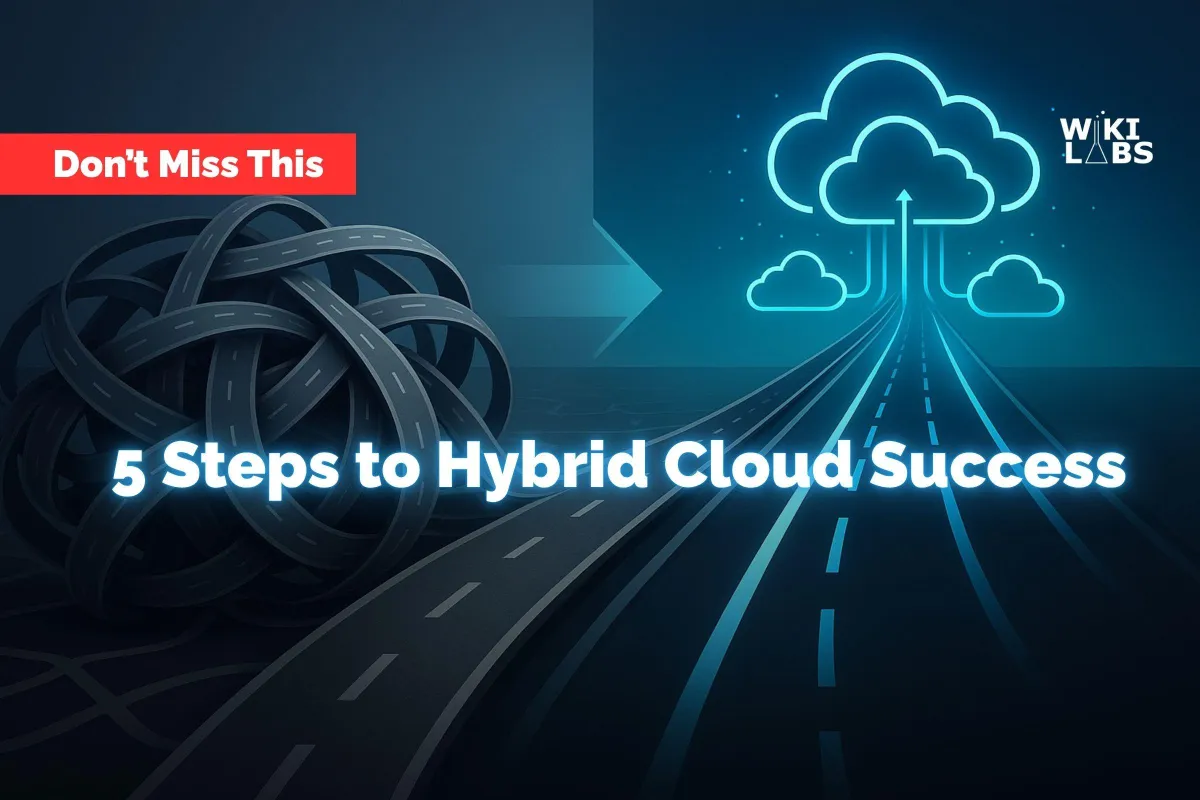
5-Step Hybrid Cloud Roadmap for Malaysian Enterprises | Wiki Labs
5-Step Hybrid Cloud Roadmap for Malaysian Enterprises

Introduction
In an era where digital transformation dictates competitive advantage, Malaysian enterprises from banks and GLCs to private-sector champions face mounting pressure to modernise their IT infrastructure. Rigid legacy systems struggle to keep pace with fluctuating workloads, stringent regulatory requirements, and escalating costs. A well‑executed hybrid cloud strategy, underpinned by a standardized operating environment (SOE), offers the agility to scale on demand, the control to meet local compliance, and the efficiency to optimise spending. This article lays out a concise, five‑step roadmap to help Malaysian CIOs and IT leaders navigate their hybrid cloud journey with confidence.

Assess Your Workloads and Compliance Needs
First, identify which applications and data sets are best suited to public cloud, private cloud, or on‑premises environments. Consider:
Performance demands: Mission‑critical systems often require low latency and consistent throughput.
Regulatory constraints: Financial services and government entities must adhere to Bank Negara Malaysia and PDPA guidelines.
Cost profiles: Analyse current spend on compute, storage, and network to model total cost of ownership in each environment.
Conduct a thorough audit of top‑tier applications, mapping each to its ideal cloud tier within your SOE blueprint.

Establish Your SOE Blueprint
A standardized operating environment ensures uniform security, configuration, and management across all cloud tiers. Your SOE blueprint should define:
Baseline images and configurations: Hardened OS, container runtime, and middleware versions.
Security policies: Encryption standards, identity and access management (IAM) roles, and vulnerability scanning.
Automation pipelines: Continuous integration/continuous deployment (CI/CD) workflows for consistent deployments.
Develop SOE reference architectures for public cloud (e.g., AWS, Azure), private cloud (VMware/OpenStack), and on‑premises servers.
Need a tailored SOE blueprint? Contact Wiki Labs for a free blueprint consultation and align your environment today.

Build a Unified Management Layer
Managing hybrid environments often means juggling multiple consoles. Implement a unified management plane to:
Monitor performance and availability: Real‑time observability dashboards give full visibility across all tiers.
Orchestrate workloads: Automated policy enforcement moves workloads dynamically based on cost, performance, or compliance triggers.
Simplify billing and reporting: Consolidate cost data into a single view for accurate chargeback and forecasting.
Deploy an enterprise observability and orchestration platform that integrates with your SOE and all cloud endpoints.

Migrate and Modernise Incrementally
Avoid ‘big bang’ lifts. Instead:
Pilot low‑risk workloads: Start with dev/test or non‑critical applications to validate your SOE and tooling.
Refactor and containerise: Where possible, convert monoliths into microservices to leverage cloud-native benefits.
Iterate on feedback: Use performance metrics and user feedback to refine configurations and automation scripts.
Define a phased migration timeline with clear KPIs—such as migration velocity, application performance improvements, and operational cost savings.
Ready to pilot your migration? Schedule a proof‑of‑concept with our experts and see results fast.

Optimise Continuously and Enforce Governance
Hybrid cloud is not ‘set and forget.’ To sustain ROI and compliance:
Cost optimisation: Right‑size instances, leverage reserved or spot pricing, and automate off‑hours shutdowns.
Security and compliance audits: Schedule regular vulnerability scans, compliance checks, and policy reviews.
Performance tuning: Continuously monitor and adjust resource allocations to match evolving workloads.
Implement automated governance policies within your SOE framework, triggering alerts or actions when deviations occur.

Real Results: A Malaysian Financial Case Study
A leading Malaysian bank adopted this SOE‑aligned hybrid cloud roadmap and achieved:
30% reduction in infrastructure costs within nine months.
50% faster deployment cycles for new digital services.
Ensure full compliance with Malaysia’s Personal Data Protection Act (PDPA) across every cloud tier—and be audit-ready in days, not weeks.

By following this five‑step, SOE‑driven hybrid cloud roadmap, Malaysian enterprises can unlock true business agility, maintain rigorous compliance, and optimise IT spending. Ready to start your journey?
Contact Wiki Labs today to map out a customised hybrid cloud strategy that accelerates growth and strengthens resilience.
This guide was written by Wiki Labs. With over a decade of experience protecting RM-denominated operations for banks, insurers and GLCs, our specialise in turn-key continuity and disaster-recovery services.
